 W
WAcoma Pueblo is a Native American pueblo approximately 60 miles (97 km) west of Albuquerque, New Mexico, in the United States. Four communities make up the village of Acoma Pueblo: Sky City, Acomita, Anzac, and McCartys. These communities are located near the expansive Albuquerque metropolitan area, which includes several large cities and towns, including neighboring Laguna Pueblo. The Acoma Pueblo tribe is a federally recognized tribal entity, whose historic land of Acoma Pueblo totaled roughly 5,000,000 acres (2,000,000 ha), today much of the Acoma community is primarily within the Acoma Indian Reservation. Acoma Pueblo is a National Historic Landmark.
 W
WThe Aztec Ruins National Monument in northwestern New Mexico, USA consists of preserved structures constructed by the Pueblo Indians nearly a thousand years ago. The national monument lies on the western bank of the Animas River in Aztec, New Mexico, about 12 miles (19 km) northeast of Farmington. Additional Puebloan structures can be found in Salmon Ruins and Heritage Park, about 9.5 miles (15.3 km) south. Archaeological evidence puts the construction of the ruins in the 12th and 13th centuries. The Puebloan-built ruins were dubbed the "Aztec Ruins" by 19th century American settlers who misattributed their construction to the Aztecs.
 W
WCasa Grande Ruins National Monument, in Coolidge, Arizona, just northeast of the city of Casa Grande, preserves a group of Hohokam structures dating to the Classic Period.
 W
WChetro Ketl is an Ancestral Puebloan great house and archeological site located in Chaco Culture National Historical Park, New Mexico, United States. Construction on Chetro Ketl began c. 990 and was largely complete by 1075, with significant remodeling occurring in the early and mid-1110s. Following the onset of a severe drought, most Chacoans emigrated from the canyon by 1140; by 1250 Chetro Ketl's last inhabitants had vacated the structure.
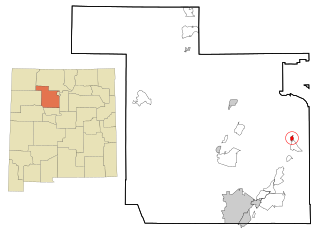 W
WCochiti is a census-designated place (CDP) in Sandoval County, New Mexico, United States. A historic pueblo of the Cochiti people, it is part of the Albuquerque Metropolitan Statistical Area. The population was 528 at the 2010 census. Located 22 miles (35 km) southwest of Santa Fe, the community is listed as a historic district on the National Register of Historic Places.
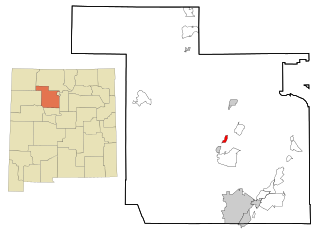 W
WJemez Pueblo is a census-designated place (CDP) in Sandoval County, New Mexico, United States. The population was 1,788 at the 2010 census. It is part of the Albuquerque Metropolitan Statistical Area.
 W
WThe Laguna Pueblo is a federally recognized tribe of Native American Pueblo people in west-central New Mexico, near the city of Albuquerque, in the United States. Part of the Laguna territory is included in the Albuquerque metropolitan area, chiefly around Laguna's Route 66 Resort and Casino. The name, Laguna, is Spanish and derives from the lake on their reservation. This body of water was formed by an ancient dam that was constructed by the Laguna people. After the Pueblo Revolt of 1680–1696, the Mission San José de la Laguna was erected by the Spanish at the old pueblo and finished around July 4, 1699.
 W
WOhkay Owingeh is a census-designated place (CDP) in Rio Arriba County, New Mexico, United States and a federally recognized tribe of Native American Pueblo people. As of 2017 1480 people were estimated to be living in the CDP, with 6,690 in the surrounding Census County Division. The 2010 census found that 1,522 people in the U.S. described themselves as exclusively Ohkay Owingeh and 1,770 as Ohkay Owingeh exclusively or in combination with another group.
 W
WOraibi, also referred to as Old Oraibi, is a Hopi village in Navajo County, Arizona, United States, in the northeastern part of the state. Known as Orayvi by the native inhabitants, it is located on Third Mesa on the Hopi Reservation near Kykotsmovi Village. There are no accurate census counts or estimates for the village population.
 W
WPicuris Pueblo is a historic pueblo in Taos County, New Mexico. It is also a census-designated place (CDP) and a federally recognized tribe of Native American Pueblo people. The 2010 census estimated that 68 people lived in the CDP, while 267 people in the U.S. reported being of the tribal group Picuris alone and 439 reported being of the tribal group Picuris alone or in combination with other groups. Picurís Pueblo is a member of the Eight Northern Pueblos. Their own name for their pueblo is P'įwweltha, meaning "mountain warrior place" or "mountain pass place." They speak the Picuris dialect of the Northern Tiwa language, part of the Kiowa-Tanoan language family.
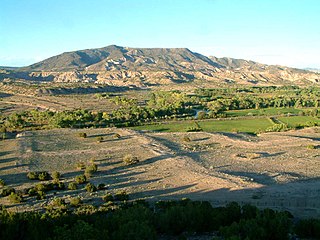 W
WPoshuouinge is a large ancestral Pueblo ruin located on U.S. Route 84, about 2.5 miles (4.0 km) south of Abiquiu, New Mexico. Its builders were the ancestors of the Tewa Pueblos who now (2011) reside in Santa Clara Pueblo and San Juan Pueblo. It has also been referred to informally as Turquoise Ruin, although there is no evidence that turquoise has ever been found in the area. Poshuouinge is situated 3 miles (4.8 km) upstream and due west of another Tewa Pueblo ancestral site, Tsama.
 W
WPueblo Alto is an Ancestral Puebloan great house and archaeological site located in Chaco Culture National Historical Park, northwestern New Mexico, United States. The complex, comprising 89 rooms in a single-story layout, is located on a mesa top near the middle of Chaco Canyon; 0.6 miles (1 km) from Pueblo Bonito, it was begun between AD 1020 and 1050. Its location made the community visible to most of the inhabitants of the San Juan Basin; indeed, it was only 2.3 miles (3.7 km) north of Tsin Kletsin, on the opposite side of the canyon. The community was the center of a bead- and turquoise-processing industry that influenced the development of all villages in the canyon; chert tool production was also common. It shares its mesa with another great house, Nuevo Alto, both of which are now protected within the borders of Chaco Culture National Historical Park. Storerooms at Pueblo Alto opened to the outside rather than into the interior rooms and there was a huge midden of pottery. This and chert found in the midden came mostly from the Chuska area 70 km (43 mi) to the west.
 W
WPueblo Bonito is the largest and best-known great house in Chaco Culture National Historical Park, northern New Mexico. It was built by the Ancestral Puebloans who occupied the structure between AD 828 and 1126.
 W
WPueblo del Arroyo is an Ancestral Puebloan great house and archaeological site located in Chaco Culture National Historical Park, in New Mexico, United States.
 W
WPueblo Grande de Nevada,, a complex of villages located near Overton, Nevada and listed on the National Register of Historic Places.
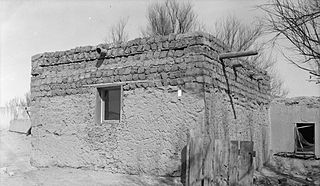 W
WPueblo of Isleta or Isleta Pueblo is an unincorporated community and Tanoan pueblo in Bernalillo County, New Mexico, United States, originally established in the c. 14th century. The Southern Tiwa name of the pueblo is Shiewhibak (Shee-eh-whíb-bak) meaning "a knife laid on the ground to play whib", a traditional footrace. Its people are a federally recogized tribe.
 W
WPueblo Pintado is a census-designated place (CDP) in McKinley County, New Mexico, United States. The population was 247 at the 2000 census.
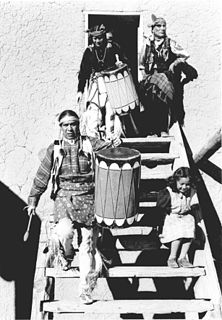 W
WSan Ildefonso Pueblo is a census-designated place (CDP) in Santa Fe County, New Mexico, United States, and a federally recognized tribe, established c. 1300 C.E. The Pueblo is self-governing and is part of the Santa Fe, New Mexico Metropolitan Statistical Area. The population was 524 as of the 2010 census, reported by the State of New Mexico as 1,524 in 2012, and there were 628 enrolled tribal members reported as of 2012 according to the Department of the Interior. San Ildefonso Pueblo is a member of the Eight Northern Pueblos, and the pueblo people are from the Tewa ethnic group of Native Americans, who speak the Tewa language.
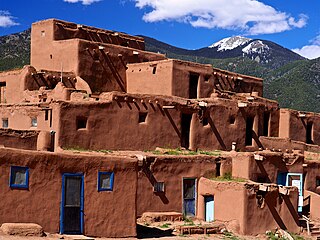 W
WTaos Pueblo is an ancient pueblo belonging to a Taos-speaking (Tiwa) Native American tribe of Puebloan people. It lies about 1 mile (1.6 km) north of the modern city of Taos, New Mexico. The pueblos are considered to be one of the oldest continuously inhabited communities in the United States. This has been designated a UNESCO World Heritage Site.
 W
WTesuque is a census-designated place (CDP) in Santa Fe County, New Mexico, United States. It is part of the Santa Fe, New Mexico, Metropolitan Statistical Area. The population was 909 at the 2000 census. The area is located near Tesuque Pueblo, a member of the Eight Northern Pueblos, and the Pueblo people are from the Tewa ethnic group of Native Americans who speak the Tewa language. The town of Tesuque is separate from the pueblo. The pueblo was listed as a historic district on the National Register of Historic Places in 1973.
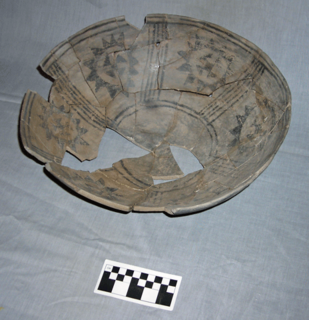 W
WThe Tsama Pueblo is a Tewa Pueblo ancestral site in an address-restricted area of Abiquiú, New Mexico. It was occupied from around 1250 until around 1500 and contained 1100 rooms. The site and others in the area were explored by Florence Hawley Ellis in the 1960s and 1970s. In 1983, it was listed on the National Register of Historic Places listings in Rio Arriba County, New Mexico. Tsama is located 3 miles (4.8 km) from the Poshuouinge site. The Sapawe site is closely related. In December 2008, The Archaeological Conservancy extended the Tsama Archaeological Preserve by 11.6523 acres, mostly cobble mulch garden plots which were likely once constructed by the residents of Tsama Pueblo.
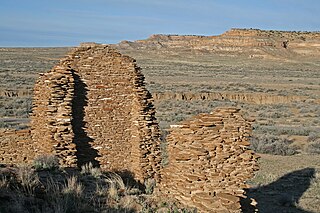 W
WUna Vida is an archaeological site located in Chaco Canyon, San Juan County, New Mexico, United States. According to tree rings surrounding the site, its construction began around 800 AD, at the same time as Pueblo Bonito, and it is one of the three earliest Chacoan Ancestral Puebloan great houses. Comprising at least two stories and 160 rooms, it shares an arc or D-shaped design with its contemporaries, Peñasco Blanco and Pueblo Bonito, but has a unique "dog leg" addition made necessary by topography. It is located in one of the canyon's major side drainages, near Gallo Wash, and was massively expanded after 930 AD.
 W
WWalpi,, is a Hopi village established around 900 AD. It is located above Arizona State Route 264, east of the Grand Canyon in Navajo County, northern Arizona. Walpi is the Hopi term for "place of the notch." Historically, the village has also been known as Ash Hill Terrace, Gaspe, Gualpi, Hualpi, Kuchapturela, Valpee, and Wolpi. Walpi became the official name as a result of a decision of the Board on Geographic Names in 1915.
 W
WWijiji is an Ancestral Puebloan great house and archaeological site located in Chaco Canyon, in New Mexico, United States.